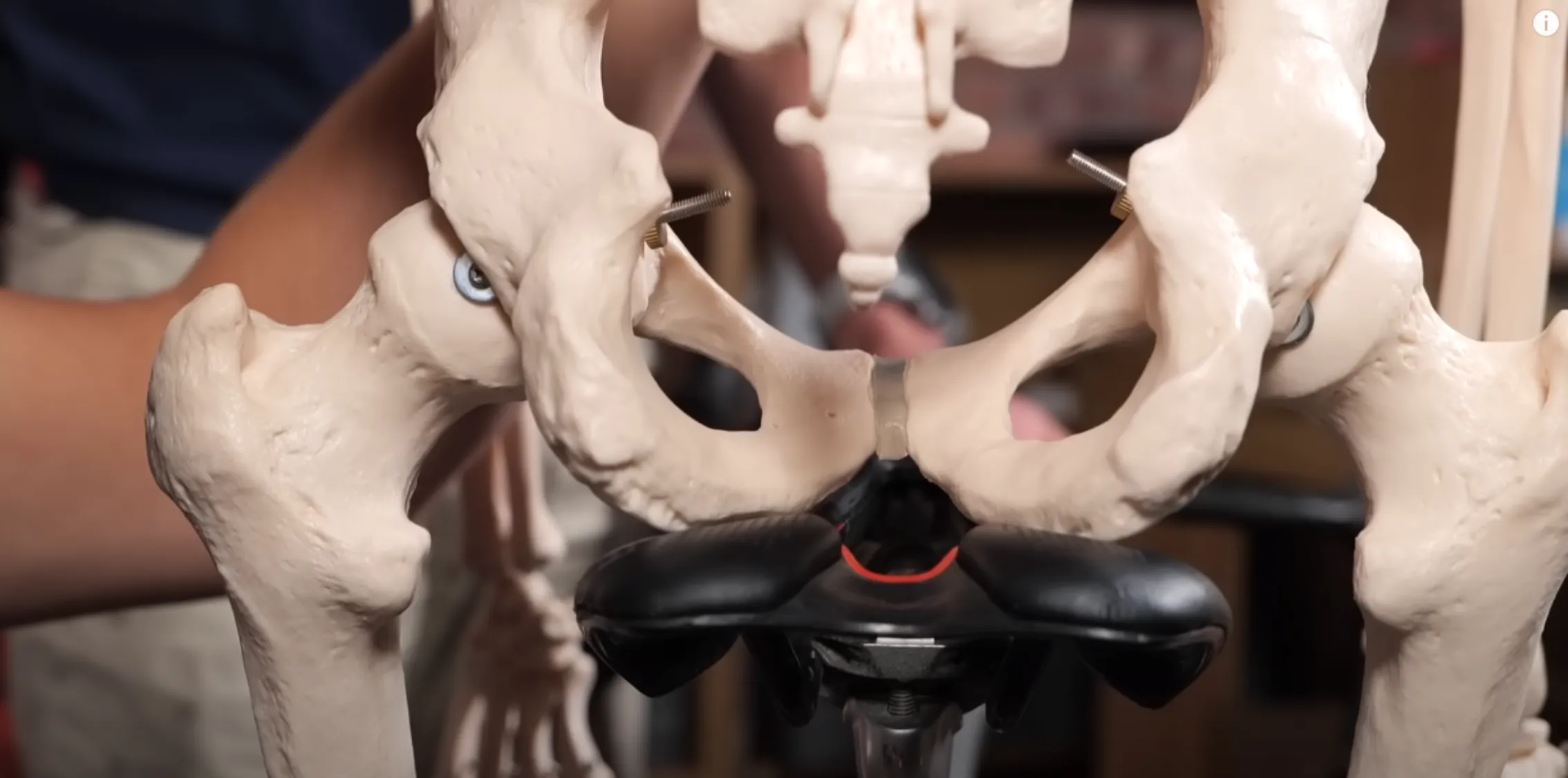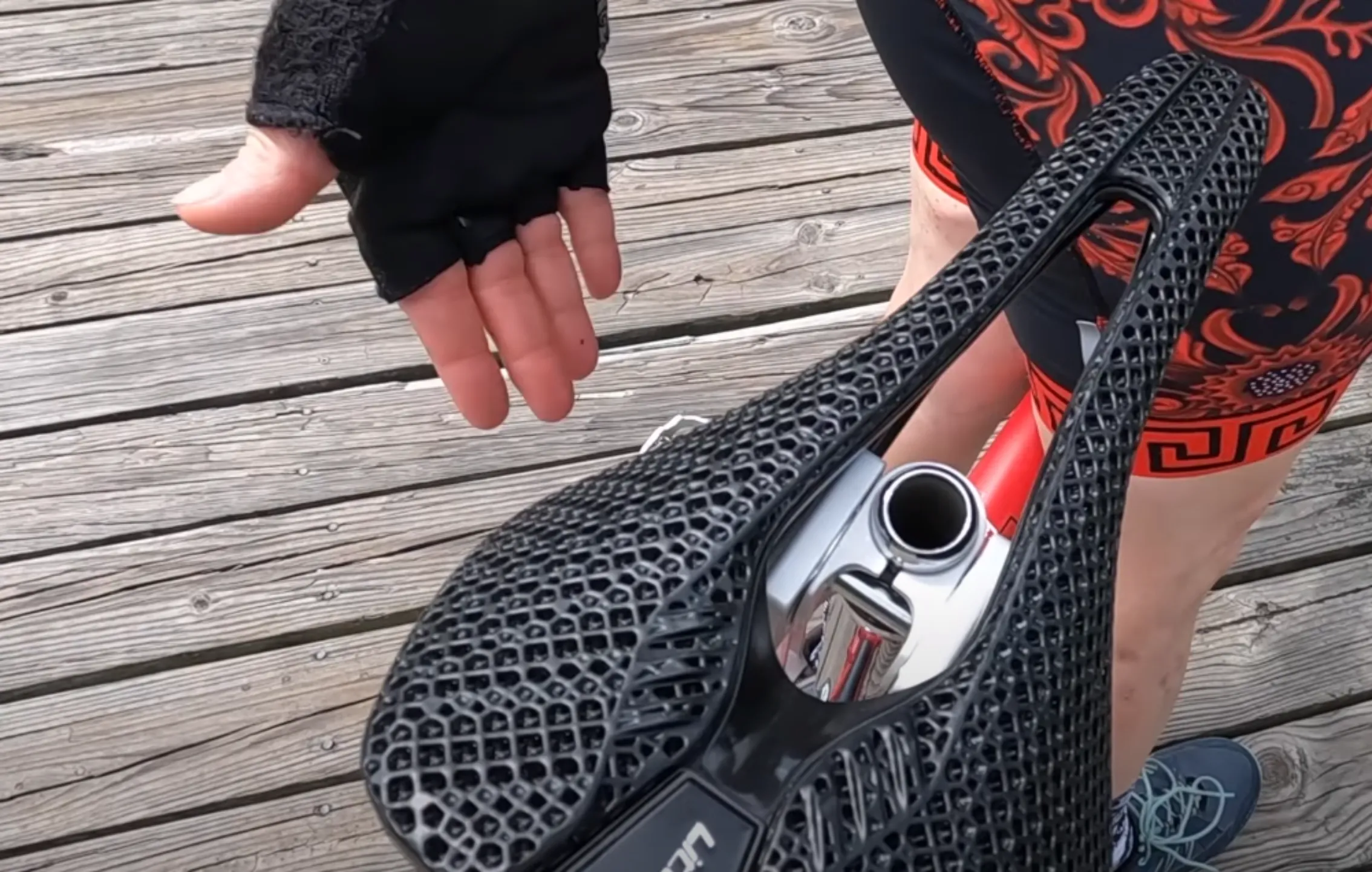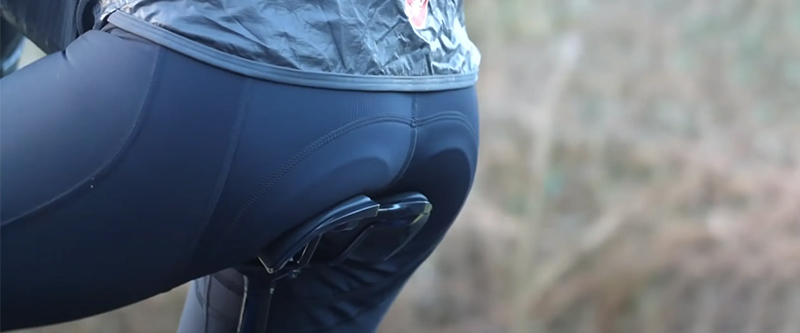The usual culprit is a high saddle, which forces the pelvis to rock across the top of the saddle as the legs cannot extend dynamically enough. High saddles have the secondary effect of pushing you forward, causing your sit bones to move to a narrower, less supportive area.
Ensuring the perfect saddle, achieving an optimal bike fit, and donning a high-quality chamois are critical for preventing discomfort, chafing, and other saddle-related issues women may encounter while cycling.
In this blog post, we will explore is sunblock better than an arm sleeve for cycling, searching for the best way to protect your arms while cycling. We compare sunblock and arm sleeves.
How Do I Stop Cycling Saddle Pain: 6 Proven Relief Tips

For cycling, saddle pain is a common issue that many riders experience. You can incorporate specific techniques into your cycling routine to stop saddle pain. Here are some tips that can help you stop cycling saddle pain:
Apply Chamois Cream
Chamois cream is a lubricant designed to reduce friction and chafing in the sensitive areas of your body. Applying chamois cream to your shorts or directly onto your skin can help prevent saddle sores and other skin irritations. Choose a high-quality chamois cream that is non-greasy and absorbs quickly.
Rest Up
When you feel soreness or irritation, take a break from cycling and let your body heal. Continuing to ride through the pain will only worsen it. Take a day or two off at the first signs of soreness to resume cycling faster. Regular rest breaks into your routine, significantly when increasing ride length, to avoid saddle sores.
Cold Therapy
Applying a cold compress to the affected area may be beneficial if you suffer from pain and inflammation. This can help to minimize swelling and ease the discomfort. Cold compresses can be created by wrapping ice (or peas in a bag) over the sore area and leaving it on for 10-15 minutes.
Eat Right for Your Rear
You’ve got to stay hydrated and eat healthy to conserve energy and prevent chafing and infection. Adequate hydration helps keep skin moist and supple, reducing dryness and cracking. To support collagen growth, consume foods rich in vitamin C and zinc. Protein is also essential for tissue growth and repair.
Don’t Pop It
If you have an abscess, it’s crucial not to pop or squeeze it. Doing so can worsen the infection and cause it to spread. If the abscess drains independently, wash the affected area with soap and water. You may also want to cover it with a bandage to keep it clean and protected.
Proper Bike Fit
One of the most important things to consider when preventing saddle pain is ensuring your bike is correctly fitted to your body. This means that your saddle height, position, and tilt should be adjusted according to your height and body type.
Choosing the Right Saddle
The saddle that you use can also play a significant role in preventing saddle pain. Look for a saddle that is comfortable and well-cushioned, and try to avoid those with a narrow profile.
Proper Cycling Technique
Your cycling technique also plays a crucial role in avoiding saddle pain. You should distribute your weight evenly across the saddle and avoid putting too much pressure on any area.
Pain Relief Options
If you experience saddle pain, specific pain relief options can help ease your discomfort. Consider taking an over-the-counter pain reliever or using a topical anti-inflammatory cream.
Always Wash Your Shorts After Every Ride

It’s essential to prioritize cleanliness for cycling gear, especially your shorts. After every ride, washing them thoroughly is recommended to get rid of bacteria and other potential irritants that can cause discomfort. Maintain a regular cleaning routine to ensure that your cycling experience is comfortable.
Choose the Correct Shorts
It might be because of issues with your pants. Invest in a good chamois with extra padding and reduced friction to prevent chafing. Many chamois have anti-microbial properties to prevent bacteria buildup, which can lead to saddle sores. Choose well-fitting shorts to avoid chafing.
Keep the Area Dry
Drying and cleaning the area is essential, as moisture can worsen saddle sores. Proper undergarments can make a vast difference. Wear loose clothes that won’t rub against the sore while not riding. Wear loose-fitting, breathable clothes.
Conclusion
Cycling saddle pain can be a frustrating and debilitating problem for many riders. The good news is that there are several practical solutions to ease pain and prevent future discomfort. Finding the right saddle, ensuring your bike fits, and adjusting your posture and saddle position can significantly improve your cycling experience.
Investing in a comfortable saddle is a wise investment in your cycling experience. Don’t let saddle pain ruin your ride. Start exploring and enjoy the journey.
FAQs
Why Does My Saddle Hurt So Much?
Friction while cycling is often caused by skin that is not lubricated well or by wearing shorts that don’t fit properly and bunch up while pedaling. To avoid this, wearing cycling shorts directly against your skin is essential, with no underwear.


